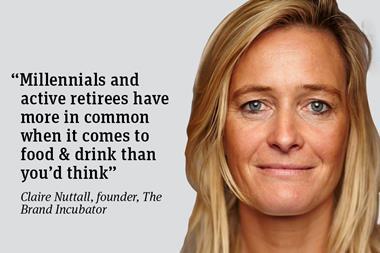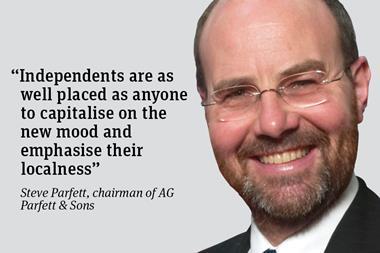
Fmcg companies have for a long time put effort into understanding consumer needs and occasions. It is only more recently they have fully woken up to the needs, behaviour and psychology of the shopper at the point of purchase, and what this means for product design, merchandising and in-store marketing.
It boils down to getting seen, getting understood and then getting bought. In this column, I’ll talk about the first - getting seen.
Supermarkets are extremely complex visual environments. A large store may have 30,000 lines, plus countless price tickets, navigation signs and marketing messages. The shopper has limited cognitive energy. They will only notice a fraction of the products and only register a fraction of the messages. So, what can you do to get seen? There are three key areas.
First, optimise and protect your visual ID. Be clear about what your brand’s visual ID is. What is definitive and specific about the brand’s design? What is it about the colour, the shape, the logo? It’s surprising how often companies are not clear on this. And once you are clear on what defines it, protect it. Protect it from copyists, of course, but also beware the risks of your own limited editions, on-pack promotions or re-designs. Instant visibility is normally more important.
Second, be in the right place in store. Not all aisles are equal. Very few shoppers walk the whole store, so make sure you are where the traffic is. But, equally, be somewhere relevant. Shoppers thinking about personal care are not thinking about food, so probably won’t see food at that time, even if it is right in front of them. Make sure you are near products meeting similar needs, even when you are on a promotional end. And when you are in the aisle, remember not all positions are equal. Beware being missed as shoppers turn into the aisle. Beware being outside the shopper’s natural field of vision at shelf (the ‘diamond hotspot’). And if you are not the signpost brand - the brand shoppers look for as they seek a category - then get near to it.
Thirdly, prime the shopper. In your advertising, tell shoppers where to find you in store, if there could be any doubt. This is increasingly important as categories blur. Then show the shopper what to look for. All advertising should feature your pack shot and visual ID, super clear and bold. And keep repeating the visual ID as the point of purchase approaches (near stores, in car parks, at shelf). If the shopper has recently seen you, they are more likely to notice you at the moment of truth.
It isn’t easy - you have to work at it. So protect and optimise your visual ID, be in the right place in store, and prime the shopper.
Jeremy Garlick is a partner of Insight Traction



















No comments yet